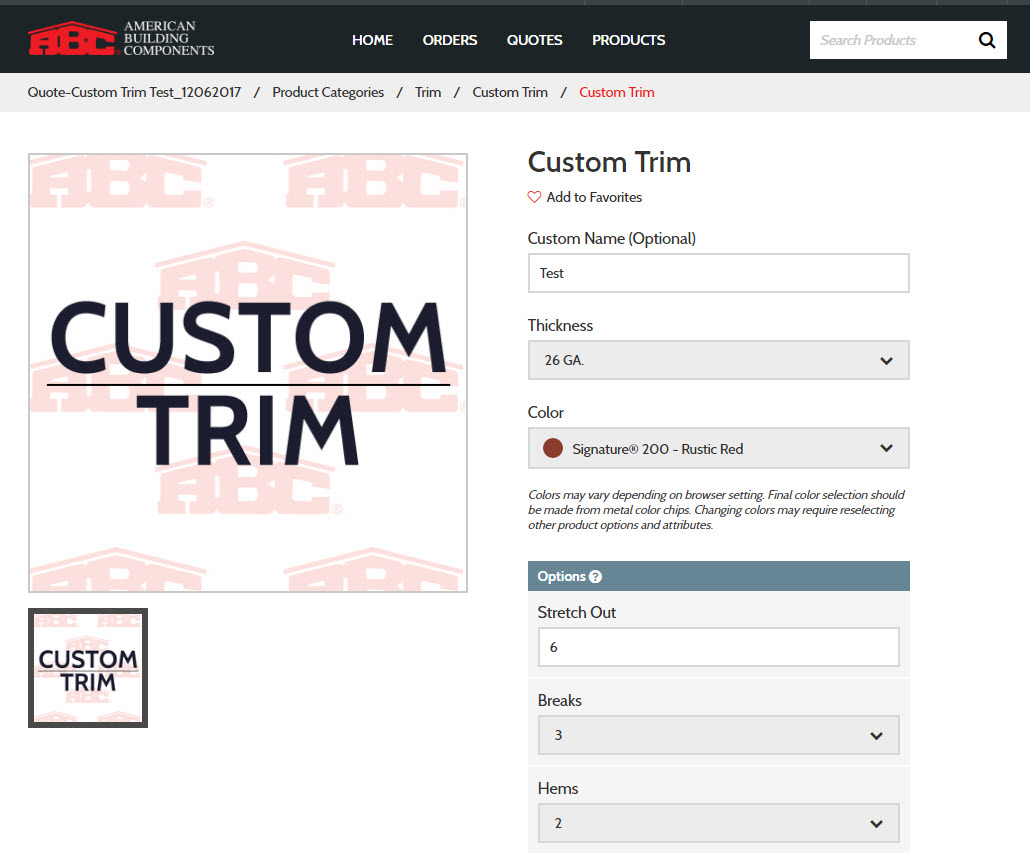You’ve heard it before: “Online is the way of the future!” but do online solutions really meet the demands of traditional building? In recent blog posts, we’ve outlined the general benefits of using an online ordering platform to order metal building products. These include the customized metal roof and wall panels and trim American Building Components (ABC) offers. Beyond basic ordering functionalities (which are must-haves for an effective tool), there are additional features that manufacturers can incorporate to save you time and help you effectively build your projects when ordering metal online.
Time-saving features that improve ordering metal online include:
- Copying and Merging Online Carts: Sophisticated online ordering tools now feature the ability to copy previously-created quotes, quote templates and/or orders. Once copied and/or merged, you can then modify item attributes like color and gauge to suit your preferences. These tools can also feature the ability to merge all items from several sources into a single, combined cart.
- Consolidated Carts: Some online ordering tools take care to consider not just the actual tool functionality, but the experience people have when using it. Part of this is ensuring users can quickly and easily view order details. Enhanced online ordering websites are attempting this by grouping like-products together—thus reducing the page length of quotes and orders. This minimizes the time needed to view quotes and orders, and enables you to easily see the most important details.
- Changing Multiple Items at Once: Large quotes and orders often require that the same specifications apply across a series of different items. For example, you may want the same panels but in a different color, texture or thickness. Likewise, you may even want to remove entire product types (like panels or trim). Instead of modifying cart items one at a time, you can now change to several products at once.
- Complete Building Assemblies: Ordering metal online helps make getting the products you need easier and faster. But what if you know what you want to build, but aren’t sure about which products you’ll need? Online ordering tools like ABC’s now provide a selection of “Building Assemblies” to help. This feature groups all products needed to complete a project into single, pre-defined bundles. Selecting an assembly bundle puts all products needed for that building type into your online cart with just a few clicks of your mouse. In addition to saving time and effort, these assemblies can include warranty protection if all other conditions are met. Note that it’s also possible to remove specific products (like fasteners, sealant, etc.) if you already have them.
- Account Management Improvements: Controlling who can place orders has been a key benefit of many online ordering systems. Based on customer feedback, ABC has overhauled this part of our tool, making it much easier for your organization’s designated account administrator to add and modify users, as well as set access and spending limits and track user activity within the system. Overall, these seemingly basic improvements allow you to more effectively manage your business.
- View All Quotes and Orders: Common to many e-commerce sites, only the user who creates the quotes and/or orders generated through their account can see them. However, because most organizations rely on several people collaborating to best service their customers, more sophisticated capabilities are required. New features allow your account administrator to grant multiple users access to view quotes and orders while controlling the level of detail shared. This allows your team access what they need to do their jobs while also protecting sensitive details at your discretion.
Industry-first features like these further support building contractors, project managers and suppliers in meeting the needs of their customers. ABC has recognized the value tools and features like these can provide. As more people begin ordering metal online, we aim to continue enacting improvements that positively impact the ABC ordering process.
To find out more about ordering metal online, including how to price, quote and place orders, visit us online or contact your local ABC representative today. To be notified when we launch time-saving online ordering enhancements, stay tuned to our blog, email and social media posts.






